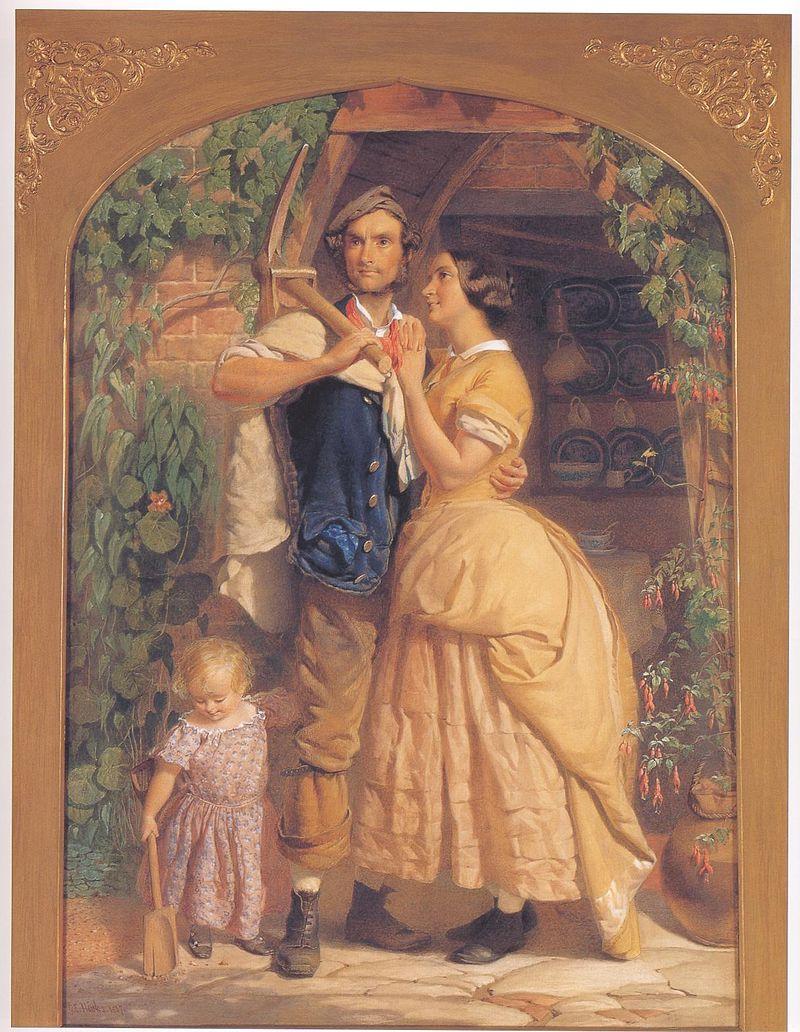This watercolor was done by George Elgar Hicks in 1957. It portrays the two "separate spheres" that women and men were assigned to. In the painting the viewer can see that the man has his work clothes on and a tool slung over his shoulder, exposing his subtle muscular physique. His gaze is towards the horizon, where he will head to work and also to the future. The woman is wearing a beautiful dress, tucked up by her waist, ready to work at their home. Her gaze is directed towards her husband. She is looking up to him, seemingly accepting her role to stay at home. The wife also has a slight smile, implying that she is happy to stay at home and take care of domestic matters. She looks healthy and content. The child on the other side of the husband, looks to also be content with their life. This makes is possible for the viewer to understand the connotation, that men were the hard workers who left their families to provide for them, whereas women were the ones who would stay at home and take care of the domesti matters, including the children. To me this illustrates that people at the time believed women needed to heed to their husband and nothing else.
The 19th century is when gender roles become much more ingrained in society. Before, it was not uncommon for women to work alongside their husbands. But, over time women were to take care of all the domestic duties while the men would head off to labor elsewhere. The only times they would really come together was for breakfast and dinner, leaving the rest of the day for them to work separately. Commonly the men would be older than their wives and would earn the income to enforce the ideology of men being higher up in the hierachy. The principle of separate sphere's even defined their reason for sex differently. For men sex was central and for women reproduction was central. Essentially meaning that men were more worldly and women were more godly. Women were seen as innocent, men as rough around the edges. Women remained more private, whereas men would gather publicly. The novel we are currently reading reflects this heavily. Especially with the opportunities (or lack of opportunities) they are given and how marriage is one of the most important things they will ever participate in. Once again, the men in Mansfield Park are trying to find a woman who will support them in their job ventures and career, whereas most women are looking to find a man where she will be able to comfortably live in a nice home and take care of their children. The women who marry for love and as a result of that marry poor, are heavily looked down upon.
Works Cited
Hughes, Kathryn. “Gender Roles in the 19th Century.” British Library, 15 May 2014, https://www.bl.uk/romantics-and-victorians/articles/gender-roles-in-the….
Steinbach, Susie. "Victorian era". Encyclopedia Britannica, 12 Mar. 2021, https://www.britannica.com/event/Victorian-era. Accessed 7 February 2022.


